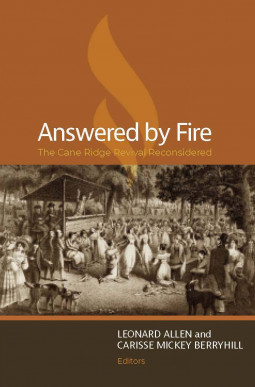
Answered by Fire
The Cane Ridge Revival Reconsidered
by Leonard Allen and Carisse Mickey Berryhill
This title was previously available on NetGalley and is now archived.
Send NetGalley books directly to your Kindle or Kindle app
1
To read on a Kindle or Kindle app, please add kindle@netgalley.com as an approved email address to receive files in your Amazon account. Click here for step-by-step instructions.
2
Also find your Kindle email address within your Amazon account, and enter it here.
Pub Date Jan 26 2021 | Archive Date Aug 16 2022
Abilene Christian University Press & Leafwood Publishers | Abilene Christian University Press
Talking about this book? Use #AnsweredbyFire #NetGalley. More hashtag tips!
Description
The Cane Ridge Revival of August 1801 has been called “America’s Pentecost.” It brought together in the backwoods of Kentucky many thousands of people who, despite their denominational differences, joined in fasting, prayer, singing, and preaching to seek renewal.
Presiding over the six-day event was Barton Warren Stone, a Presbyterian minister. Stone said that he and others had prayed for a revival, and that God “answered by fire; for he poured out his spirit in ways almost miraculous.” Hundreds were converted, and thousands experienced visible, often dramatic manifestations of God’s presence.
Stirred by the experience of Cane Ridge, a loose network of congregations formed, sometimes called “New Light,” more often simply “Christian.” The beginnings of modern-day Churches of Christ are rooted precisely here.
Drawing upon the most recent scholarship, this volume explores such questions as:
• What was the British background to Cane Ridge?
• What were the controversial “exercises”?
• What was the role of women and blacks in the revival?
• How did the revival shape the new “Christian” movement?
• And what became of the revival theology with which it was born?
Available Editions
| ISBN | 9781684263516 |
| PRICE | |



